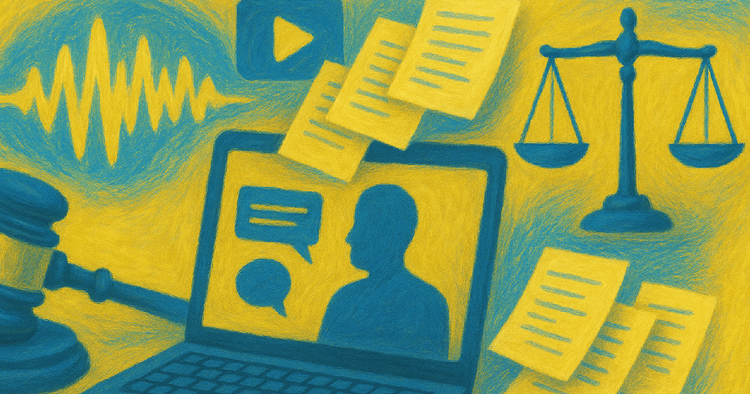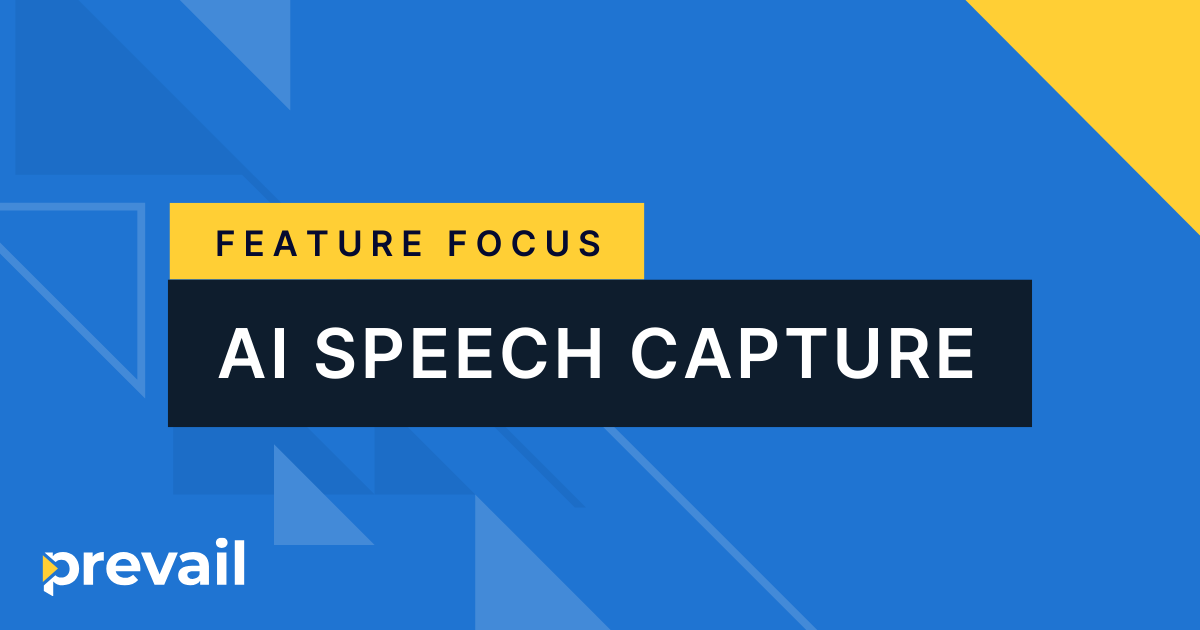The Role of AI in eDiscovery: Striking the Right Balance

The sheer volume of digital information available today is staggering. Every email, document, and chat message adds to a mountain of data that legal teams must sift through in legal proceedings. This isn’t just a slow trickle—it’s a flood. Electronically stored information (ESI) has exploded with the rise of cloud-based platforms and the constant pulse of digital communication.
But how do you efficiently manage this tidal wave of data when timelines are tight and the stakes are high? That’s where eDiscovery is revolutionizing how legal teams handle vast amounts of information. And now, with artificial intelligence (AI) leading the charge, the process has become faster, more accurate, and incredibly efficient. As the legal landscape continues to evolve, AI is no longer just an option—it’s the future of eDiscovery.
The Evolution of Data in eDiscovery
It wasn’t long ago that legal teams were buried in paper—literally. Discovery meant hours of manual sorting, page after page. It was a slow and tedious process prone to human error. However, as the world embraced digital transformation, the landscape shifted. Paper gave way to electronic data, and eDiscovery was born.
The initial leap into the digital world wasn’t seamless. Early eDiscovery tools were clunky, offering only essential search functions, leaving legal teams scrambling to keep pace with the ever-growing wave of ESI. But as technology advanced, so did the tools. Enter cloud-based platforms. Suddenly, teams could store and access vast amounts of data securely from anywhere without the need for hardware. Collaboration became easier, faster, and more scalable.
Yet even with cloud solutions in place, the immense volume of information can still be overwhelming. This is where AI steps in. No longer just a tool for search, AI is transforming how legal teams manage complex data sets, allowing them to sift out the information that truly matters. The evolution from paper to pixels set the stage, but AI is now vital to modern eDiscovery.
How AI Enhances eDiscovery
AI has reshaped how legal teams handle eDiscovery, transforming a cumbersome task into a streamlined process. In the past, legal teams had to peruse endless piles of data, hoping to identify the key documents relevant to their case. Now, this process has become faster and more precise with AI.
One of AI’s most powerful tools is predictive coding. By analyzing a small sample of documents, AI can identify the important ones, allowing teams to focus on the information that matters. This drastically reduces the time spent on review and improves efficiency. Another leap forward is Technology-Assisted Review (TAR). TAR uses machine learning, enabling AI to continuously refine its understanding of relevant documents, cutting down manual review time without sacrificing accuracy.
AI tools also excel at sorting through vast amounts of data, ensuring nothing slips through the cracks. It helps legal teams by flagging potential patterns and relevant connections that might otherwise take hours to uncover manually. While AI doesn’t replace the human expertise needed to interpret and strategize around the findings, it provides a powerful assist in the discovery process, empowering legal professionals to focus their time and energy where it’s most needed. By reducing the noise, AI enables teams to identify critical information more efficiently.
Addressing AI’s Challenges in eDiscovery
Utilizing AI in eDiscovery brings undeniable benefits, but it’s not without challenges. One of the most pressing issues? Algorithmic bias. AI learns from the data it’s given, which means if the training data is skewed or incomplete, the results can reflect those same biases. This can lead to flawed conclusions and unfair outcomes. For legal teams, that’s a significant problem. Human oversight is still essential. While AI can accelerate processes, it’s critical to have experts monitoring, reviewing, and validating the output to ensure the integrity of the findings. After all, a biased AI is no better than a human with blind spots.
There’s also the question of privacy. AI thrives on data, but not all data is created equally—or safely. Using sensitive client information in AI models raises serious concerns about confidentiality. Legal teams need to be vigilant about the tools they use, ensuring compliance with stringent privacy regulations like GDPR and CCPA. The terms of service for AI platforms can be tricky, so careful attention is needed to ensure no client data is unintentionally exposed or misused. Protecting sensitive information isn’t just a legal obligation; it’s a matter of trust. And in the legal industry, trust is everything.
These challenges are real, but they’re not insurmountable. With the proper safeguards, AI can be an invaluable asset in the eDiscovery process without compromising fairness or privacy.
AI’s Role in Security and Compliance
Modern legal work involves managing vast amounts of sensitive data, and the risks of breaches or mishandling are more pressing than ever. While AI offers powerful tools to aid in eDiscovery, it’s not a standalone solution for security and compliance. Instead, AI works best when paired with strong human oversight and ethical practices. Top platforms, including those powered by AI, are built to meet stringent security standards like SOC2, ISO 27001, and FedRAMP. These certifications are critical safeguards, ensuring that data is handled responsibly and securely—but it’s important to remember that adhering to these standards relies on human diligence as much as technology.
AI can assist in reinforcing security measures, such as encryption, access control, and multi-factor authentication, by streamlining processes and identifying vulnerabilities more efficiently. However, these tools must be thoughtfully implemented and monitored to prevent potential risks, especially when sensitive legal data is at stake. AI can help teams respond to threats faster, but it doesn't replace the need for a robust, human-led security framework.
In remote work environments, where collaboration across distances can introduce new vulnerabilities, AI tools can support security efforts, but they are only part of the equation. True security in eDiscovery comes from a blend of advanced technology, ethical usage, and constant oversight. In an era where compliance and data protection are critical, AI is a helpful ally—but not the cure-all.
AI in eDiscovery Is Here to Stay
Though AI isn’t perfect and still has years of development ahead, it’s an indispensable tool for modern eDiscovery, assisting legal teams in data management. By automating complex tasks and handling substantial amounts of information, AI makes the discovery process more efficient and accurate. However, the key to its success lies in striking a balance between leveraging AI’s capabilities and maintaining ethical human oversight. As legal teams face growing data challenges, those who embrace AI-powered solutions will stay ahead in the industry, ensuring efficiency and responsibility in their eDiscovery processes.




